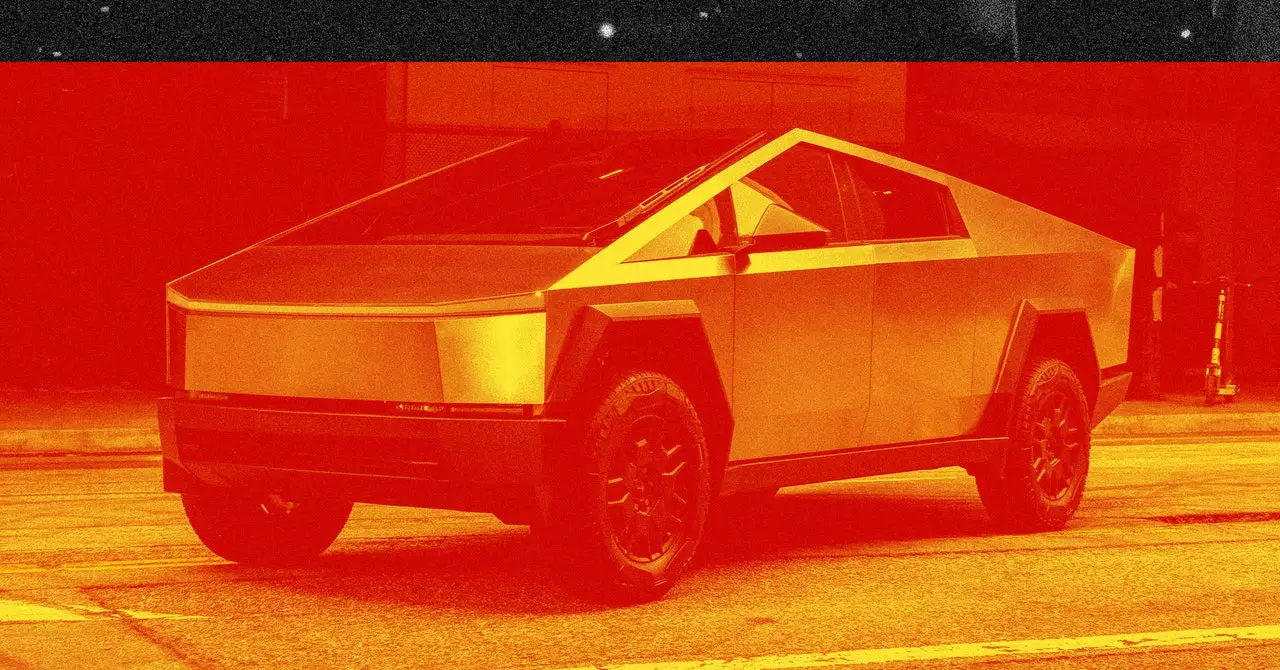As the automotive landscape continues to evolve, Tesla’s Cybertruck remains a poignant topic of discussion. With its distinct design and promising features, the Cybertruck has garnered a plethora of reservations; however, recent developments indicate a shift in consumer sentiment and market dynamics. The introduction of a new $79,990 Cybertruck model has amplified discussions surrounding aftersales prices and the decision-making processes of potential buyers, suggesting Tesla’s initial reservation system may soon become obsolete.
Gone are the days when consumers had to wait in line to secure their Cybertruck. Tesla’s decision to accept walk-in orders at its North American stores signifies a maturation in its sales approach, reflecting a more responsive market strategy. This newfound accessibility allows potential buyers to leave with their vehicles within weeks, dramatically altering the urgency manufacturers typically build around their products. Reservation holders, once excited about being first in line, now find themselves vying for relevance amidst burgeoning accessibility—a significant psychological shift that underscores the peculiarities of consumer behavior in the automotive sector.
Online discussions reveal a profound unease among early adopters regarding build quality. A user known as MC1987 noted their decision to return a top-spec Cyberbeast due to quality concerns, illuminating the anxieties that accompany novel vehicle launches. This sentiment resonates across social media platforms, reflecting a widespread desire for reliability and functionality that meets the high expectations set by the brand. Moreover, the lack of traditional trading behaviors—wherein consumers typically exchange one truck for another—raises questions about the Cybertruck’s appeal among conventional truck users, adding layers of complexity to its market positioning.
While sales figures in North America appear promising, the Cybertruck faces a rocky road overseas. Its failure to comply with strict European pedestrian safety regulations underscores a critical vulnerability in Tesla’s strategy. International markets, particularly in Europe, present potential growth opportunities; however, regulatory barriers stand as formidable challenges. Consequently, the perception of the Cybertruck as a “rolling axe head,” as described by a UK automobile listings website, serves as a reminder that innovative design must align with regulatory expectations to achieve widespread acceptance.
Another hurdle Tesla grapples with is its noteworthy number of recalls—six in a single year for the Cybertruck. While recalls often play a crucial role in ensuring consumer safety, the frequency and public visibility of these announcements can lead to diminished brand confidence among shareholders and buyers alike. The intricate relationship between regulatory adherence and brand integrity is under scrutiny; higher recall rates may generate apprehension among consumers, threatening the robust image Tesla has cultivated for itself. The interplay between safety and innovation is acutely felt in the case of the Cybertruck, as both Tesla and its consumers navigate an era of heightened awareness regarding vehicle safety and quality.
The Cybertruck encapsulates the dual sentiments of excitement and uncertainty among consumers and the industry alike. As Tesla adapts its sales strategies and grapples with quality concerns, it must also confront regulatory landscapes and consumer expectations. The future of the Cybertruck relies on Tesla’s ability to not only deliver a product that meets contemporary automotive standards but also to maintain consumer trust amidst an evolving market. The road ahead is fraught with challenges, but navigating these obstacles may ultimately define the legacy of Tesla’s ambitious foray into the world of electric pickups.

